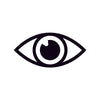

How Often Should You Get Your Eyes Tested?
Whether you wear glasses or not, the importance of eye tests in maintaining eye health cannot be overstated. Not only can it help you determine the state of your vision, but it’s also crucial for detecting several common medical conditions, such as diabetes, high blood pressure, arthritis and more. Through eye exams, you’ll also know if you need to start wearing glasses or change your prescription. Wearing the wrong prescription can lead to discomfort and pain.
Keep reading to learn more about how often you will need an eye test and the signs that you should get an eye test.
WHY ARE EYE TESTS IMPORTANT?
Eye tests are the only way to detect eye conditions early. For many eye conditions in their early stages, there are no obvious signs or symptoms.
A yearly eye test can allow your eye doctor to examine your eye health over the long term, and help detect whether there are any signs of medical conditions.
HOW OFTEN SHOULD YOU HAVE AN EYE TEST?
It is generally recommended to have your eyes checked every one to two years. However, there are other factors that may influence how often you should have an eye test. These factors include the following:
AGE
Age is a key factor in your vision. While all people experience vision problems at some point in time, some people may be more vulnerable to developing issues with their eyesight than others. Certain age groups, for example, are more likely to develop vision problems and require prescription eyewear.
CHILDREN
Since some childhood learning difficulties are associated with undiagnosed vision problems, it’s recommended for kids to have their first eye test at the age of 3. This way, early detection and correction are possible.
Also, since eye health is important to your child’s growth and development, regular eye tests are advised. Aside from helping identify and manage vision problems early on, the test will also help your child feel at ease with eye exams.
TEENS
Children typically develop myopia once they hit puberty. The onset of myopia or near-sightedness during this stage would require most teenagers to use prescription eyewear.
This is why teenagers must get comfortable getting regular eye exams. When teenagers have untreated vision problems, these can affect various aspects of their life, including their ability to participate in athletic activities, work, or study.
OVER 40S
As people grow older, the human body's cells lose their ability to regenerate, including those in the eyes. The lenses lose their elasticity and ability to change shape inside the eye. This condition is known as presbyopia, resulting in a loss of the capacity to focus effectively on objects close to one’s line of sight.
People with this ailment must hold objects farther from their eyes to see the items clearly, which often becomes apparent among people in their mid-40s.
This is why it’s crucial to have regular eye exams once you reach this age. Most age-related disorders can be addressed effectively with an early diagnosis.
FAMILY HISTORY
Routine eye exams are also important for people with a family history of eye conditions. There are many hereditary eye diseases, such as:
- Age-related macular degeneration (AMD)
- Albinism
- Cataracts
- Colour-blindness
- Glaucoma
- Night blindness
- Retinitis pigmentosa
Among adults, the two leading causes of blindness are glaucoma and AMD. With regular eye tests, you’ll be able to avoid developing severe eye conditions or, at the very least, learn to manage them as early as possible.
PREGNANCY
During pregnancy, the body undergoes a series of changes that can affect the eyes. Fluctuations in hormone levels, in particular, can lead to dry eye syndrome, blurry or distorted vision and the appearance of floaters and spots.
While these are usually temporary and tied to hormonal changes during pregnancy, it’s better to get them checked by your healthcare provider or optometrist to be sure.
10 SIGNS YOU MIGHT NEED AN EYE TEST
A thorough eye exam every two years ensures your vision remains clear — with or without prescription lenses. If you’re 65 or over, a yearly eye test is recommended.
However, even if you aren’t due for an eye test, certain symptoms and indicators should prompt you to visit your eye doctor sooner rather than later. They are:
1. HAZY OR BLURRY VISION
Hazy or blurry vision is a common indicator of a vision issue. When you have trouble seeing details in objects, reading or recognising faces, you may need vision correction with contact lenses or prescription glasses frames.
If you notice that your vision is suddenly hazy or more blurry than normal, it is recommended to see an eye doctor.
2. VISUAL DISTURBANCES (SPOTS, FLOATERS, FLASHES OF LIGHT, HALOS, ETC.)
You may experience the occasional floater or flashes of lights.
However, if you experience an unusually large amount of visual disturbances, get medical attention immediately by seeing an optometrist, ophthalmologist or your healthcare provider.
3. SQUINTING A LOT
If you find yourself squinting to make images clearer, you’ll need an eye exam to determine whether wearing glasses can resolve the issue.
4. FREQUENT HEADACHES
While headaches can occur as part of daily life, the pain and stress experienced can range from mild pain in the temples to more severe pain around the eyes.
Frequent headaches could be an indication of infection, glaucoma or eye strain.
5. SENSITIVITY TO LIGHT
It is common to experience some light sensitivity (also known as photophobia), as you move from indoor lightning to an outdoor environment.
Although, if you find your eyes suddenly becoming light-sensitive, get an eye exam. It can be a symptom of an eye disease or infection.
6. EYE PAIN, STRAIN OR FATIGUE
If you spend a lot of time working on a computer and other similar devices or engage in long-distance driving, you may experience eye fatigue, pain or strain.
However, if you experience any pain in or around the eyes, it may be a sign of a more serious problem. If your eyes have trouble focusing after, you may need glasses to correct the problem.
7. EYE INFECTION
You may have an eye infection if you notice some swelling on the eyelids, discharge or redness in one or both eyes, or if you experience itching.
If you observe any of these signs, get an eye check-up right away.
8. WATERY EYES
Watery eyes may indicate visual issues, but they can also be a sign of other problems, such as allergies. If the eyes are not properly lubricated, they may produce an excess amount of tears to compensate for the lack of moisture.
If watery eyes bother you or the symptoms persist, get your eyes checked immediately.
9. TROUBLE SEEING AT NIGHT
If you experience difficulty seeing at night time, it may be an indicator of deteriorating vision. This may mean you are experiencing night blindness or nyctalopia, if you have problems seeing at night or in low light.
Patients who experience night blindness may also experience sensitivity to light. If you observe these signs, go for a comprehensive eye examination.
10. DISTORTED VISION
If you start seeing straight objects like blinds or shades as wavy, bent, or misshapen, or you experience distorted or double vision, go to an eye doctor and get a diagnosis.
These can all be signs of deteriorating eye health.
WHERE TO GET AN EYE TEST
If you notice a change to your sight, or experience one or more of the symptoms, it’s ideal to schedule an eye test today. When it comes to your eye health, regular eye exams and testing can help determine and prevent any potential vision loss or eye disease. Visit your closest 1001 Optometry store if you have any questions, or book an eye test online today.
Find out here your closest 1001 Optical store location, with over 15 stores located across NSW and VIC.


